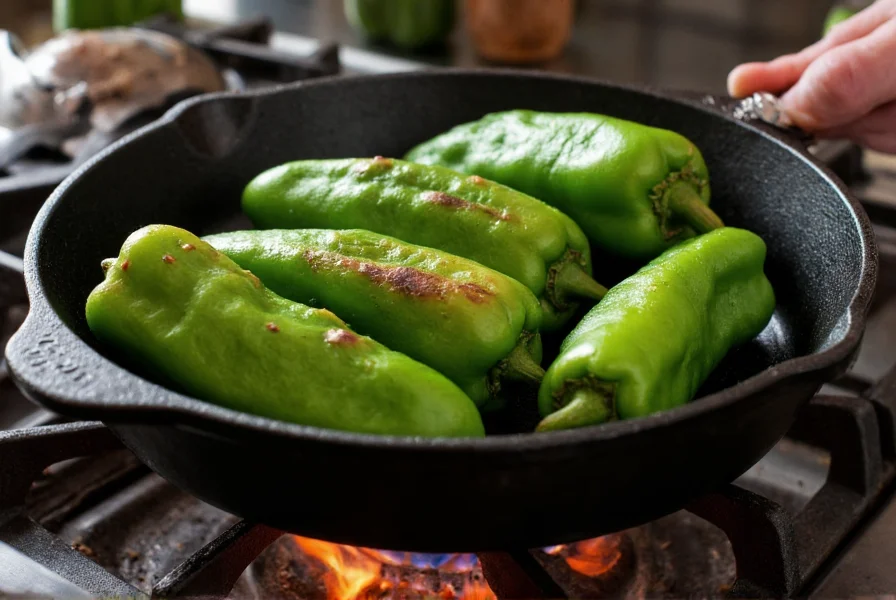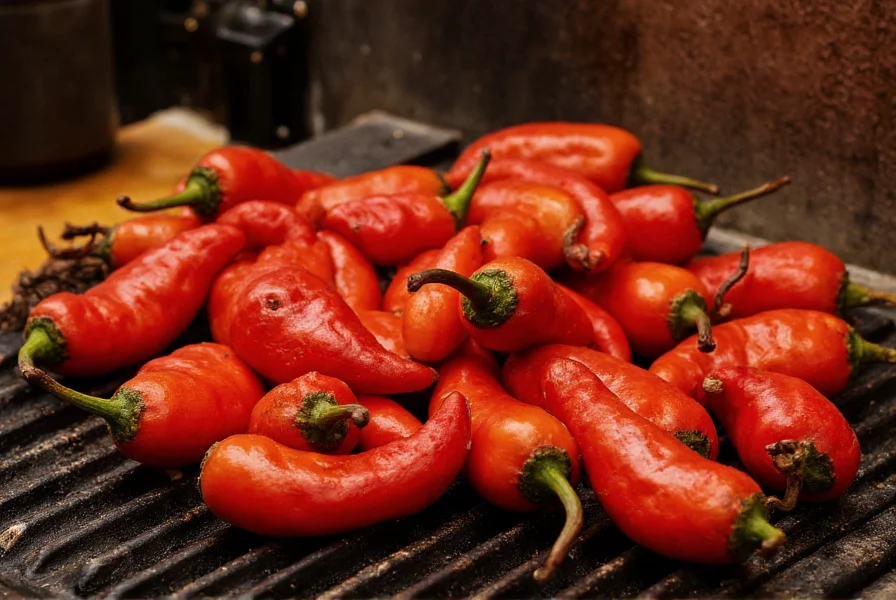When selecting the right equipment for chili preparation, understanding what makes an effective chili roaster becomes essential for both home cooks and culinary professionals. Proper roasting transforms raw chilies by developing complex flavors through controlled charring while maintaining the pepper's structural integrity. This process not only improves taste but also facilitates easier peeling—a critical step in many traditional recipes.
Types of Chili Roasters for Different Cooking Needs
Chili roasting equipment falls into three primary categories, each suited to specific cooking environments and volume requirements. Knowing these distinctions helps determine which option works best for your kitchen setup and culinary goals.
Stovetop Roasting Options
Stovetop methods represent the most accessible approach for home cooks without specialized equipment. Cast iron skillets and comals (traditional Mexican griddles) provide excellent heat retention for even charring. When using these methods for roasting fresh green chilies like poblanos or jalapeños, constant attention prevents burning while ensuring complete coverage. This technique works particularly well for small batches where hands-on monitoring is feasible.

Electric Countertop Roasters
Electric chili roasters offer consistent temperature control that eliminates hot spots common with open-flame methods. These appliances typically feature non-stick surfaces, adjustable heat settings, and sometimes rotating mechanisms that ensure uniform roasting without constant supervision. Home cooks seeking the best chili roaster for home use often prefer these models for their convenience and safety features, especially in kitchens without gas stoves.
Outdoor Roasting Systems
For processing larger quantities—such as when preserving seasonal harvests—outdoor chili roasters provide significant advantages. Propane-powered rotating drum roasters handle multiple pounds of peppers simultaneously while maintaining even exposure to heat. These systems work exceptionally well for New Mexico red chilies or other varieties requiring thorough roasting before drying or freezing. Many home gardeners find these outdoor options ideal for processing homegrown chilies efficiently.
| Type | Best For | Capacity | Key Benefit |
|---|---|---|---|
| Stovetop | Small batches, immediate use | 1-5 peppers | Accessibility, no special equipment needed |
| Electric Countertop | Regular home use | 5-15 peppers | Consistent results, temperature control |
| Outdoor Drum | Preserving harvests | 10+ pounds | High-volume processing efficiency |
Benefits of Proper Chili Roasting Techniques
Understanding how to roast chilies properly extends beyond mere convenience—it fundamentally transforms the peppers' culinary properties. The Maillard reaction during roasting develops complex flavor compounds that raw chilies lack, while the controlled charring process separates the skin from the flesh for easier removal.
When roasting chilies for canning or freezing, proper technique preserves maximum flavor and texture. The steam created during the covered resting period after roasting loosens skins without waterlogging the peppers—a common mistake that dilutes flavor. This method works particularly well for creating roasted poblano peppers used in chiles rellenos or roasted jalapeños for cream cheese fillings.
Choosing the Right Equipment for Your Needs
Selecting the appropriate chili roasting method depends on several factors beyond simple preference. Consider these elements when determining which approach suits your cooking habits:
- Frequency of use: Occasional cooks might prefer versatile stovetop methods, while frequent users benefit from dedicated electric roasters
- Pepper varieties: Thick-walled chilies like bell peppers require different handling than thin-skinned varieties
- Intended use: Roasting chilies for immediate consumption versus preservation affects equipment needs
- Available space: Countertop models require dedicated storage space compared to multi-use stovetop options
For those exploring electric chili roaster benefits, models with adjustable temperature controls provide versatility across different pepper types. The ability to maintain precise heat levels prevents scorching delicate varieties while ensuring sufficient char on thicker-skinned peppers.
Common Mistakes to Avoid When Roasting Chilies
Even experienced cooks sometimes make errors that compromise roasted chili quality. Recognizing these pitfalls helps achieve consistently excellent results:
Over-roasting: Leaving chilies on heat too long creates bitter flavors and mushy texture. Watch for uniform blistering rather than complete blackening.
Insufficient resting time: Skipping the covered bowl step makes peeling difficult. Allow at least 10-15 minutes for steam to loosen skins.
Water exposure: Rinsing chilies to remove skins washes away flavorful oils. Instead, gently rub skins off with your fingers or a soft cloth.
Improper storage: Roasted chilies maintain best quality when stored in airtight containers with a thin layer of their own juices, not submerged in water.
Mastering these techniques ensures optimal results whether you're preparing a small batch of roasted serranos for salsa or processing a large harvest of Hatch chilies for winter use. The right approach transforms simple peppers into complex flavor foundations for countless dishes.
What's the difference between roasting and toasting chilies?
Roasting involves direct exposure to high heat that chars the entire outer skin of fresh chilies, typically requiring subsequent peeling. Toasting applies to dried chilies, using dry heat to briefly warm and rehydrate them before reconstitution in liquid, enhancing their flavor without charring.
Can I roast chilies without special equipment?
Yes, you can effectively roast chilies using common kitchen tools. Place peppers directly over a gas flame, under a broiler, or on a dry cast iron skillet. Rotate frequently until evenly blistered. The key is achieving uniform char without burning, followed by the essential steaming step in a covered bowl before peeling.
How long do roasted chilies last in the refrigerator?
Properly stored roasted chilies maintain quality for 4-5 days in the refrigerator. Place them in an airtight container with a thin layer of their own juices (not submerged in water) to preserve flavor. For longer storage, freeze roasted chilies in single layers before transferring to freezer bags, where they'll keep for 6-8 months.
Why do some recipes call for roasted chilies instead of raw?
Roasting chilies develops complex flavor compounds through the Maillard reaction, creating deeper, smokier notes that raw peppers lack. The process also breaks down certain compounds that cause bitterness in some varieties. Additionally, removing the skin after roasting creates a smoother texture in sauces and fillings, while concentrating the pepper's natural sugars for a more balanced flavor profile.
Which chili varieties work best for roasting?
Thick-walled varieties like poblanos, bell peppers, and Hatch chilies roast particularly well due to their substantial flesh that holds up to charring. Jalapeños and serranos also respond nicely to roasting, though their thinner walls require more careful monitoring. Avoid extremely thin-skinned varieties like cayenne for traditional roasting methods, as they can burn quickly.











 浙公网安备
33010002000092号
浙公网安备
33010002000092号 浙B2-20120091-4
浙B2-20120091-4